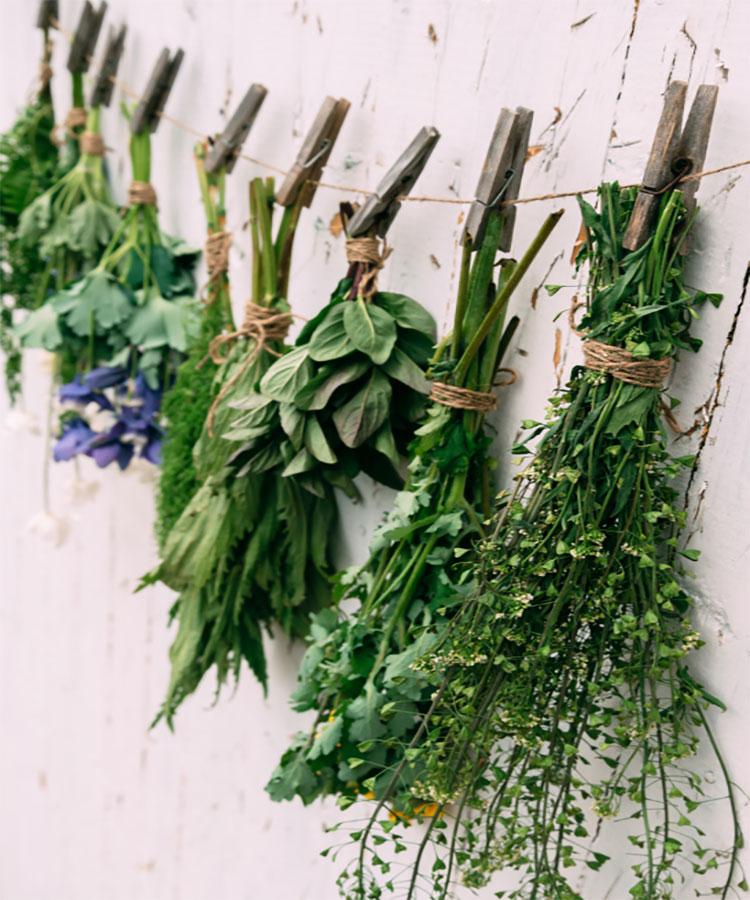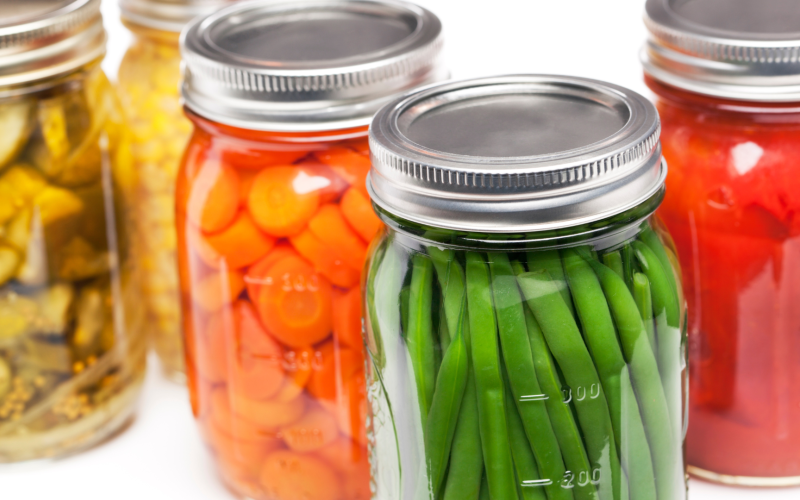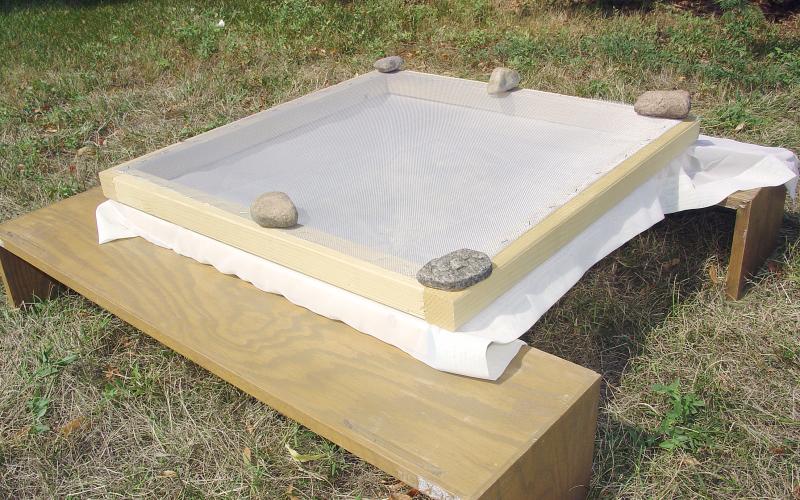Written collaboratively by Abigail Lambert, Megan Erickson, former SDSU Extension Nutrition Field Specialist, and Hope Kleine, former SDSU Extension Health Education Field Specialist.
Fresh herbs add amazing flavor and presentation aesthetic to recipes during the summertime. Their great flavors can be carried over to cooler seasons through the preservation of the plants and leaves. The two best ways to extend the life (and flavor) of herbs is through freezing or dehydrating.
Harvesting Herbs
The best time to preserve herbs is right before their flowers open. Flowering herbs can sometimes result in a bitter taste. Harvesting fresh herbs mid-morning is best, as this allows time for the sun to evaporate the dew off the plants, but not the oils, which contain the flavor. Take scissors and cut the stems just above a leaf or pair of leaves. Make sure to leave four-to-six inches of stem for later growth. Finally, rinse the herbs in water and pat them dry. Then preserve by freezing or drying!
Freezing

There are many herbs that can be frozen, such as parsley, basil, mint, tarragon, chives, cilantro, oregano or dill. Frozen herbs tend to be limp when thawed, as the cell walls rupture due to the ice crystals; it’s recommended to use frozen herbs in cooked dishes, bread dough, herb butter or sauces.
Dry Pack
Place leaves on a tray and freeze until frozen solid, approximately one-to-two hours. Pack into an airtight container. For herbs with sprigs, such as rosemary and thyme, place a few sprigs in freezer wrap or in an airtight freezer container.
Ice Cube Tray in Water
Chop herbs as you would if you were using them fresh. Fill an ice cube tray half full of water and place one tablespoon of herbs in each compartment. Freeze for 24 hours and then top off compartments. Freeze until solid, then place herb cubes in a freezer bag for storage. When you’re ready to use, add cubes straight from the freezer to the dish you’re preparing.
Ice Cube Tray in Oil
Chop herbs as you would if you were using them fresh. Mix two cups of herbs with 1/3 cup of oil.* Pour mixture into ice cube trays or four-ounce jelly jars. Freeze for 24 hours then place in a freezer bag. Note: Oil will not freeze solid like ice. It will be more malleable, allowing you to scrap out what you need. Do not store herbs in oil at room temperature; freeze right away.
*Neutral flavored oils, such as canola are preferred. Olive oil may be used if it works with the flavor of the herb.
Methods for Select Herbs
- Chives and lemon grass should be chopped before freezing, as they are thin, freeze quickly and have a limper appearance when thawed.
- Leaves of larger herbs, such as basil and bay leaves, can be blanched for 15 seconds, placed in ice water and patted dry before freezing to stop enzyme reactions.
- Dill weed, rosemary and thyme can be frozen on their stems. Wrap three-to-four sprigs in plastic wrap, then aluminum foil. Freeze.
Storage and Use
Frozen herbs stored in an airtight container are good for up to six months when kept frozen. Since herbs have textural changes when thawed due to the formation of ice crystals, it’s best to use frozen herbs in cooked dishes, rather than in fresh dishes or as garnish.
Drying

Drying is one of the easiest ways to extend the life of herbs. There are four ways to dry herbs: air, microwave, oven or dehydrator.
Air Drying
To air dry, pick a location with low humidity and good air circulation for five-to-10 days.
- Tie sturdy herbs, like rosemary, thyme, parsley and sage, together into small bundles and hang them to air dry away from your sink, stove or dishwasher. These appliances can increase the humidity in the area.
- Tender-leaf herbs, such as basil, oregano and mint, can be hung inside paper bags to dry, as they have a higher moisture content and can mold easier. Air circulation is achieved by tearing holes in the sides of the bag. Suspend the bunch in middle of the bag and close the top with a rubber band. The bag acts as a dust shield or seed catcher for seedy herbs.
- Small-leaved herbs can be laid out in a single layer on a tray covered with paper towels to dry. Herbs can be dried up to five layers using this method.
Microwave
Some herbs, such as celery, parsley and basil, dry well in the microwave. Although, microwaves that have a wattage higher than 1,000 may heat too fast, making it an inappropriate drying method. Make sure to read your manufacturer’s instructions before attempting. Place herbs in a single layer between two paper towels. The amount of herbs and wattage of the microwave affects the cooking time. Start with two-to-three minutes per cup of herbs. After every 15 seconds, mix the herbs and check for doneness. Once dried, remove from microwave and allow herbs to cool. Place in an airtight container for later use.
Oven
Set oven at 180 degrees Fahrenheit or lower. Place herbs in a single layer on a tray; put in oven, and let dry three-to-four hours with the oven door open. Note: Oven drying can destroy the herb’s color, flavor and oils.
Dehydrator
The fastest way to dry herbs is in a controlled temperature and air circulation environment, such as a dehydrator. Preheat dehydrator to between 95-and-115 degrees Fahrenheit. Place herbs in a single layer on dehydrator trays and dry between one-to-four hours. Be sure to read your dehydrator’s instruction manual before beginning.
Storage and Use
Dried herbs stored in an airtight container are good for up to three months when stored in a cool, dry location or up to one year in the refrigerator or freezer.
References
- Preserving herbs by freezing or drying, University of Minnesota Extension.
- Freezing Herbs, PennState Extension.
- Let's Preserve: Drying Herbs, PennState Extension.


